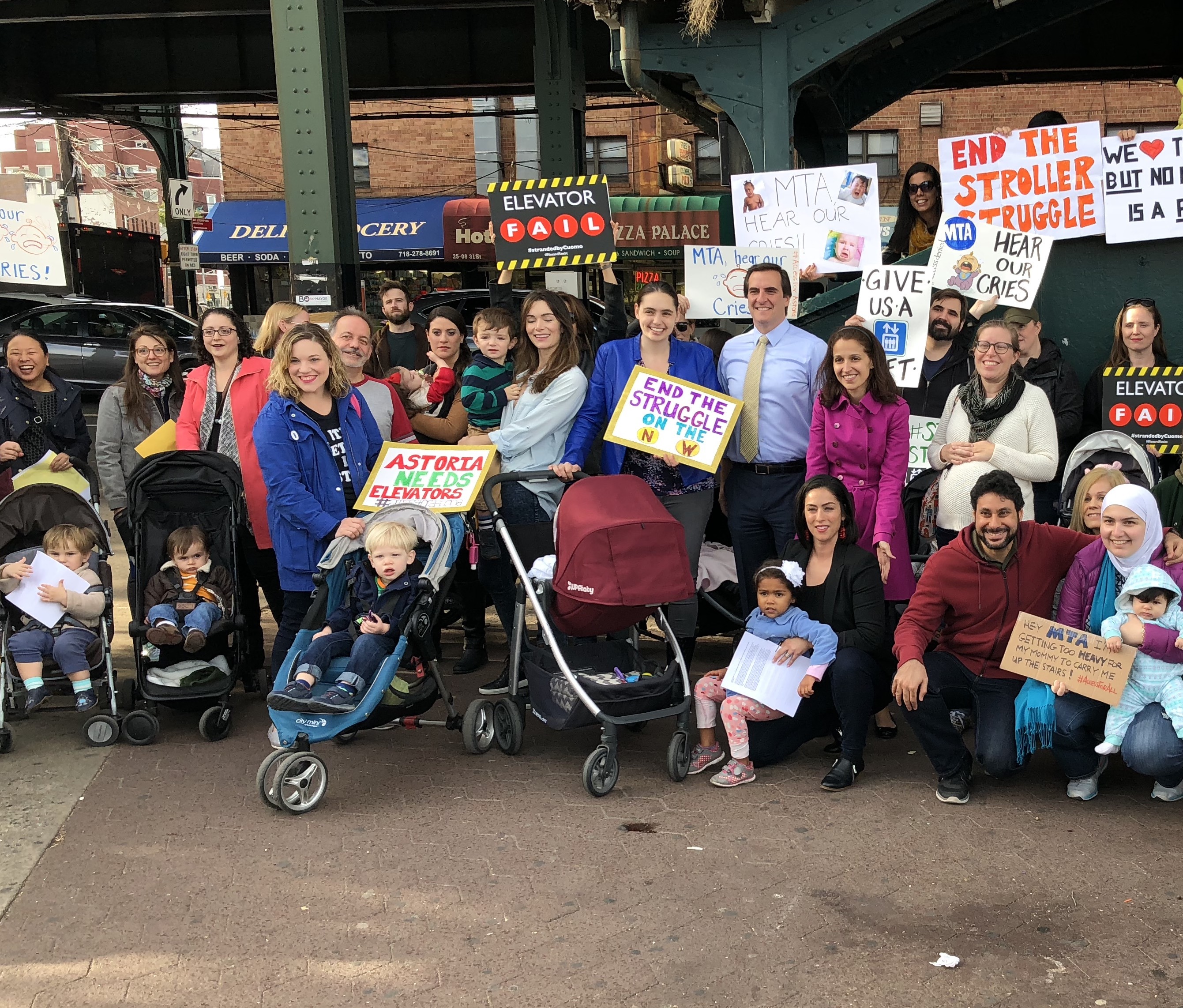
This guest post was written by Christine Serdjenian Yearwood, founder and CEO of the NYC-based advocacy group UP-STAND. UP-STAND is a movement to improve accessibility and make life easier for pregnant women and families by building a more inclusive culture that translates to stronger communities.
The comments on blogs and social media posts related to parenting and transit are pretty shocking. “Find a dude with a car!” the tame ones read, or “You chose to have kids, your problem!”
What’s truly alarming, however, is that these comments are a blunter expression of an attitude shared by many transit planners toward pregnant riders and parents. In the work I do with UP-STAND advocating for a more accessible New York City, people often tell me that children and their caregivers only experience temporary issues navigating transit, and that addressing these problems should not be a high priority.
But recent transportation research on women with children indicates otherwise.
In August, LA Metro released a report — “Understanding How Women Travel” — showing that in Los Angeles, women ride transit more than men, and that “57% of female riders with children bring their kids on transit.” These women incur higher travel costs, experience elevated stress, and face greater safety risks on transit than men.
A recent NYU report, The Pink Tax on Transportation, Women’s Challenges in Mobility, found that inaccessible transit imposes health and financial costs on pregnant women and parents with young children. Lack of stair-free transit access is a potentially fatal hazard: In January, Malaysia Goodson fell down a New York City subway staircase to her death while carrying a stroller and her one-year-old daughter.
It’s clear that caregivers with children are an important segment of transit ridership with unique needs for agencies to focus on. A forward-thinking approach to accommodating pregnant women and parents with children will expand transit access and pay long-term dividends for agencies. TransitCenter’s Who’s on Board rider surveys indicate that people who ride transit from an early age are more likely to keep riding decades later.
Let’s start reimagining transit for caregivers and kids accordingly. Here are a few of UP-STAND’s suggestions:
Access
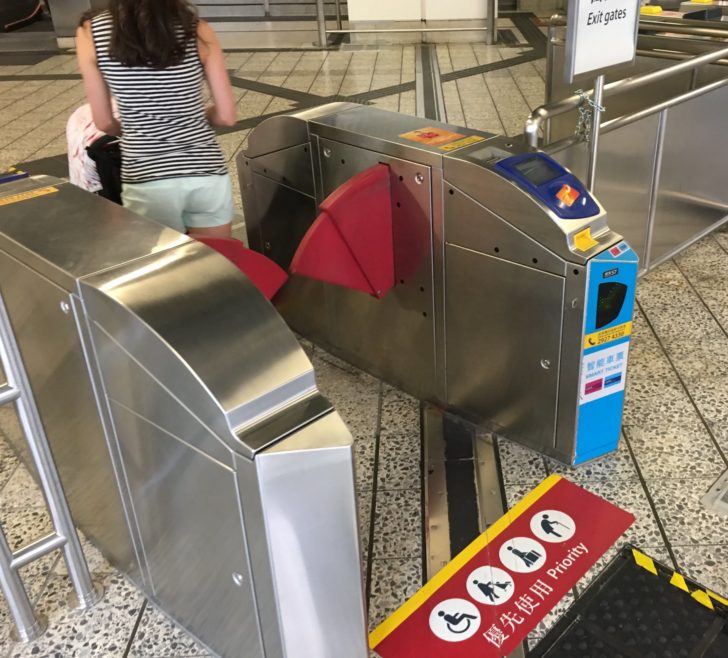
Fare gates wide enough for strollers and wheelchairs in Hong Kong.
Every transit trip starts with getting to the stop or station. Agencies should ensure that pathways to public transit are safe and accessible for people with kids, working with city agencies to improve pedestrian crossings, make curb cuts standard, and provide bus shelters recessed from busy streets.
Station design should maximize inclusion. Reliable elevators and escalators are musts, as are wide fare gates that accommodate strollers and people using assistive or mobility devices. Turnstiles and HEAT gates are inadequate — designed for only one person to enter at a time in a small space, while entering through a service gate depends on a station agent (assuming one is even present, which is often not the case). Wide fare gates allow for a fuller range of access to stations without additional assistance.
Seating
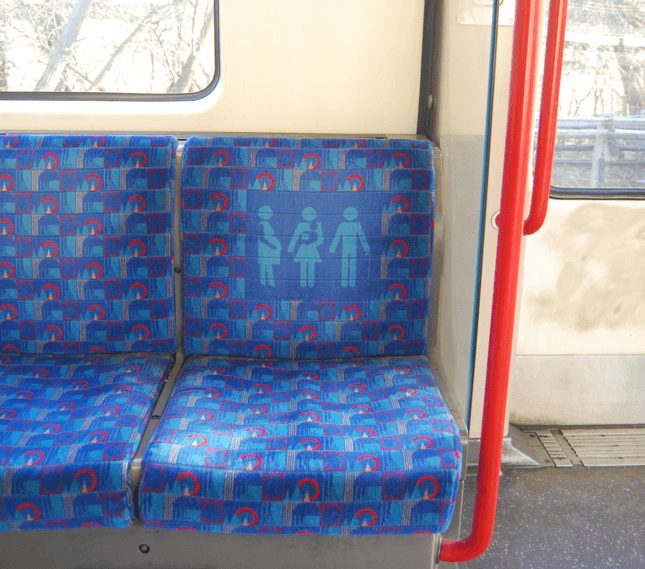
Priority seating for expectant parents on the Tube in London
Verbal announcements that seating should be prioritized for pregnant women and older riders only go so far. Courtesy campaigns that lack graphic identifiers don’t perform as well as ones that do.
Graphics for pregnant women and lap infants in priority seating areas improve safety in waiting environments and on moving buses and trains. They also eliminate guesswork for riders and cost agencies next to nothing. In the same vein, some agencies, including the MTA in New York and CTA in Chicago, are experimenting with distribution of “baby on board” and “please offer me a seat” buttons to pregnant women, people with disabilities, and older riders who want them.
The seating itself should be welcoming and usable. Leaning benches and other hostile designs do not adequately accommodate pregnant women, children, or people with disabilities.
Transit Vehicle Design
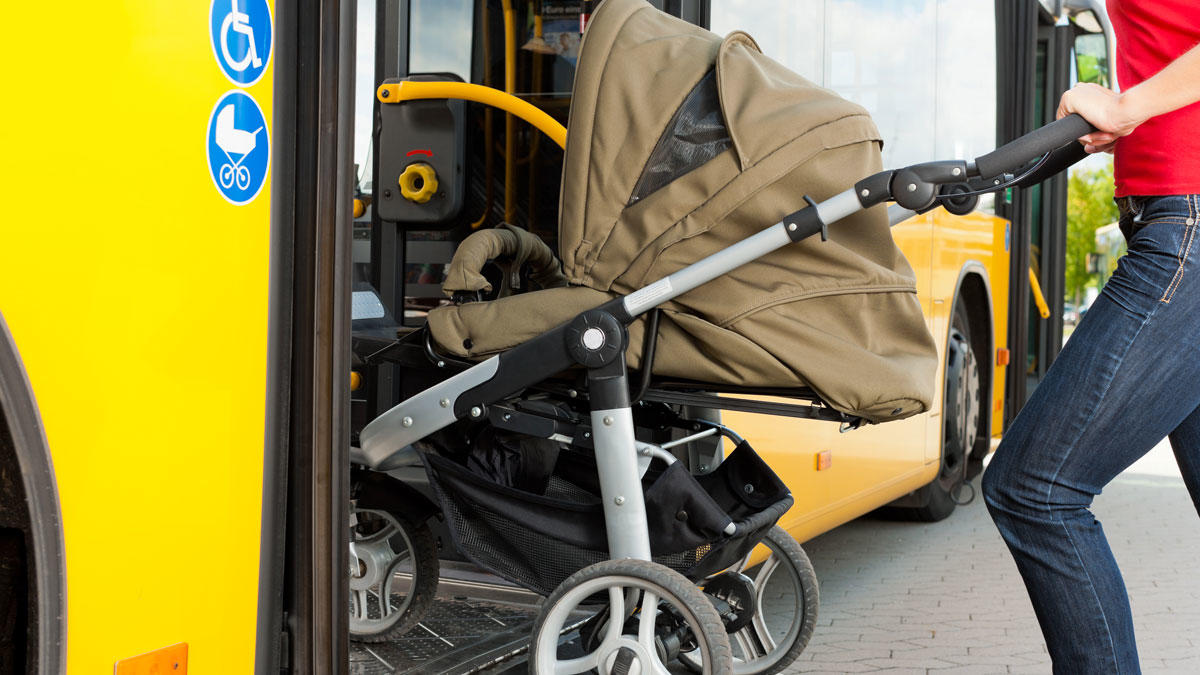
Buses in Stockholm offer dedicated space for open strollers.
Wide aisles and a stroller restraint area are especially important on buses. Closed stroller policies, by contrast, are extremely limiting: It’s unreasonable and unsafe to expect someone to remove a child and fold a stroller next to busy street traffic or a train track, then board and hold a folded stroller, bags, and children while standing on a moving vehicle.
Storage spaces like those on airport buses or commuter railcars can accommodate luggage, folded strollers and walkers, and caregiver bags.
Child seats built into buses and trains maximize safety. It’s a thing!
Frequent, reliable service
What’s good for all transit riders is especially good for parents, whose time lost to transit delays often results in higher daycare charges. The MTA’s plan for subway signal improvements, for instance, could save parents up to $2,000 annually in childcare costs.
Service that operates frequently and reliably throughout the day reduces the overwhelming stress of meeting the demands of set work and school schedules.
Family fare policy
Free or discounted rides for children lessen the financial burden on caregivers, who are mostly women, and shrink the “pink tax.” Universal, year-round programs for all children under a certain age are preferable to programs like New York’s student MetroCard policy, which carries several restrictions based on the type of trip and time of year. The Long Island Railroad, for instance, offers year-round free rides to children under 5, and up to four children age 5-11 can ride for $1.00 each.
Wayfinding
Parents with strollers should be able to rely on wayfinding information both outside and inside transit stations. Exterior signage should alert riders to the accessibility of fare gates, passageways, platforms, or boarding areas inside the station, and indicate alternative, accessible paths if possible. Interior directions for elevators and accessible platform boarding areas are essential.
All wayfinding efforts should communicate to the broadest group possible, and symbols for strollers should appear along the suggested routes for wheeled devices.
Accommodations
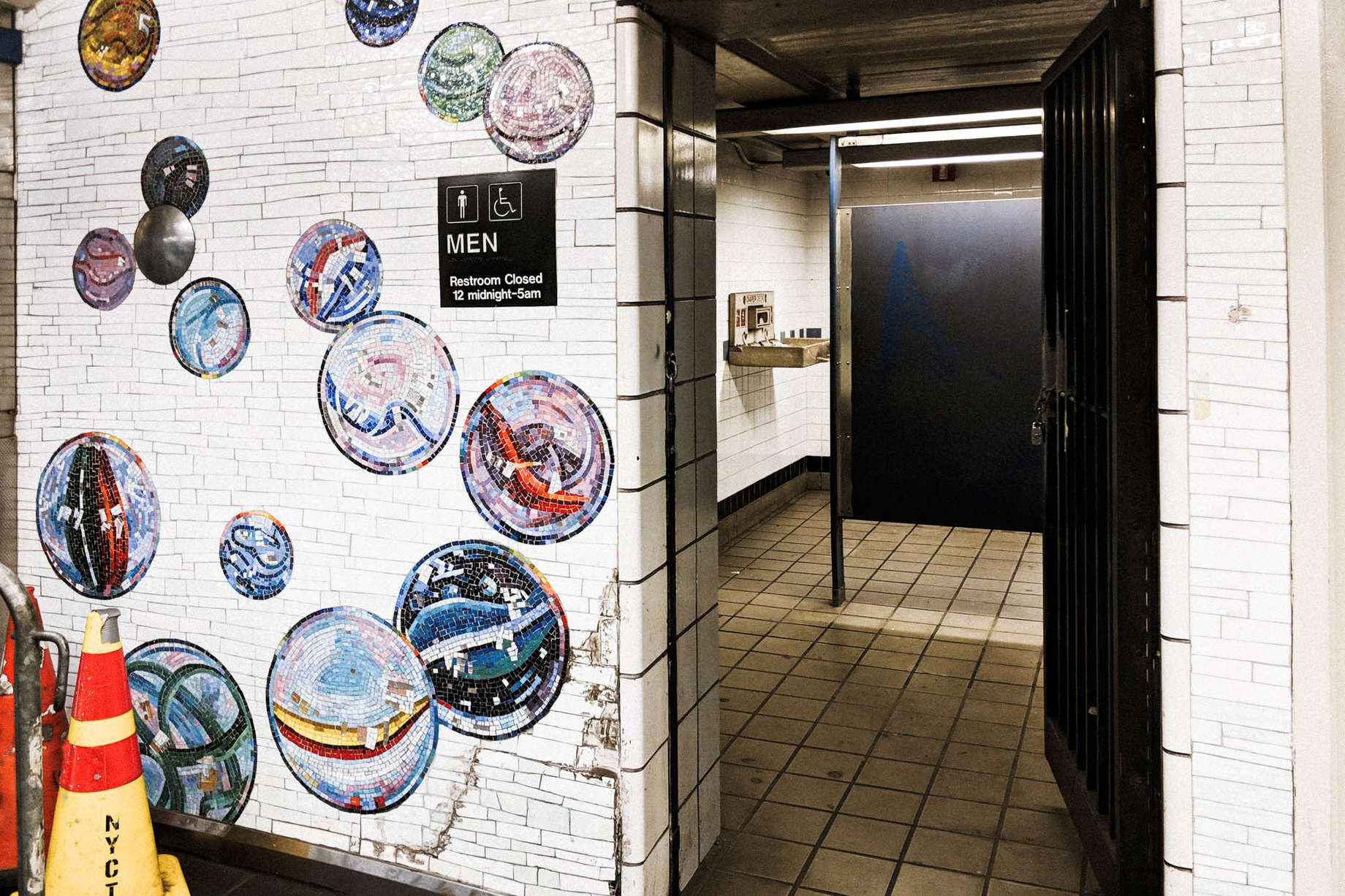
The restroom in New York’s Union Square subway station is one of few in the system that has changing tables.
Especially for services that travel longer distances, like commuter rail, waiting areas and vehicles with gender neutral bathrooms that are accessible and outfitted with changing tables, wall seats, and reachable utilities/amenities (toilets, sinks, dispensers) are a must.
Transit environments should also accommodate breast/bottle-feeding and pumping. Whether it’s a sign to support the law, or a private space with electrical outlets, riders will thank you.
Include parents and caregivers in agency outreach
To make transit work for riders with children, agencies need to actively seek their feedback via ride-alongs, station visits, internet and phone surveys, and other methods of outreach.
It’s tempting to see traveling with kids as a short-term struggle for individual transit riders, but agencies should realize that there’s a constant demand for transit from parents, caregivers, and children. We can alienate people in this phase of life, or we can include them and make transit accessible to everyone who wants to ride.
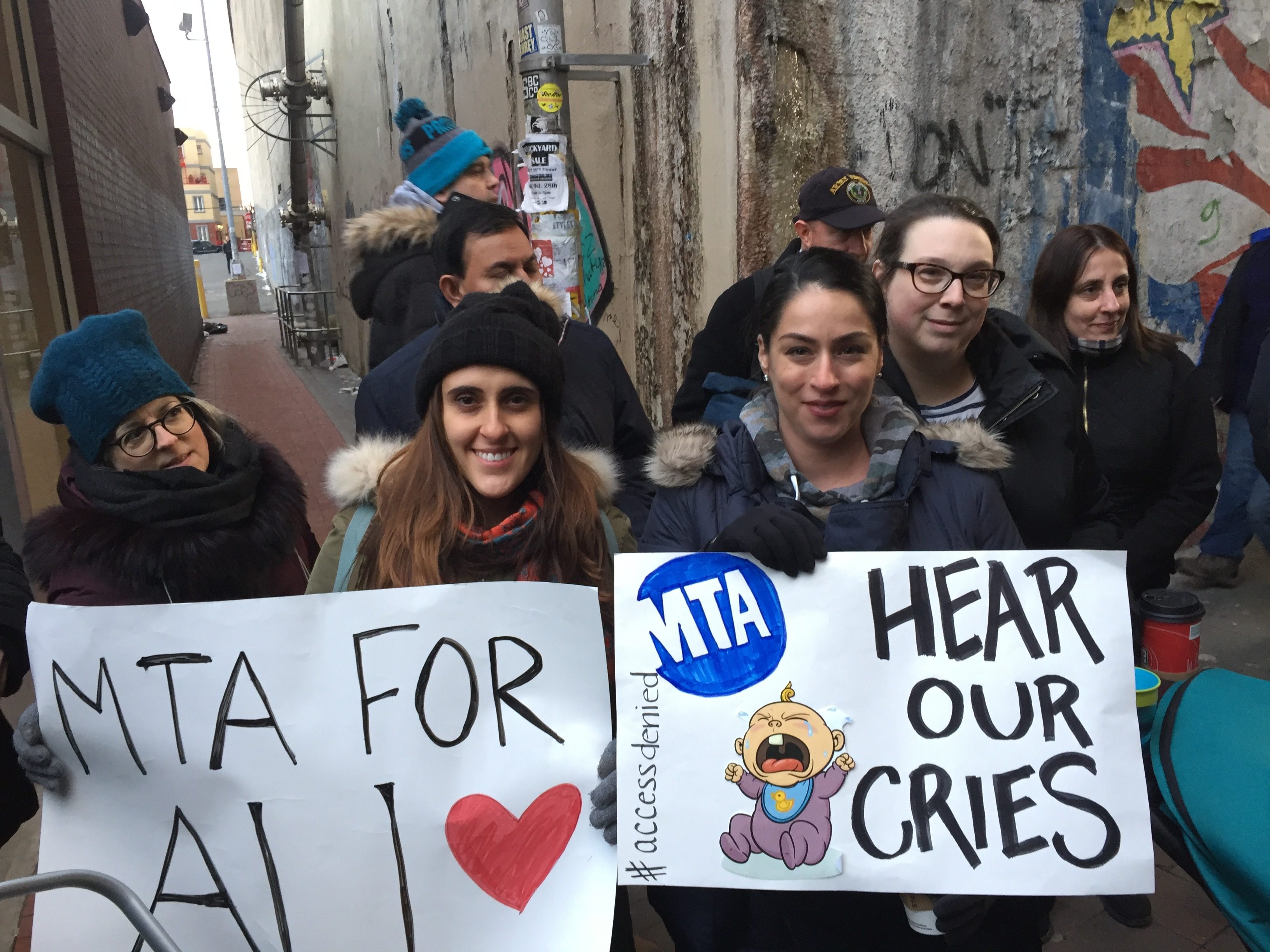
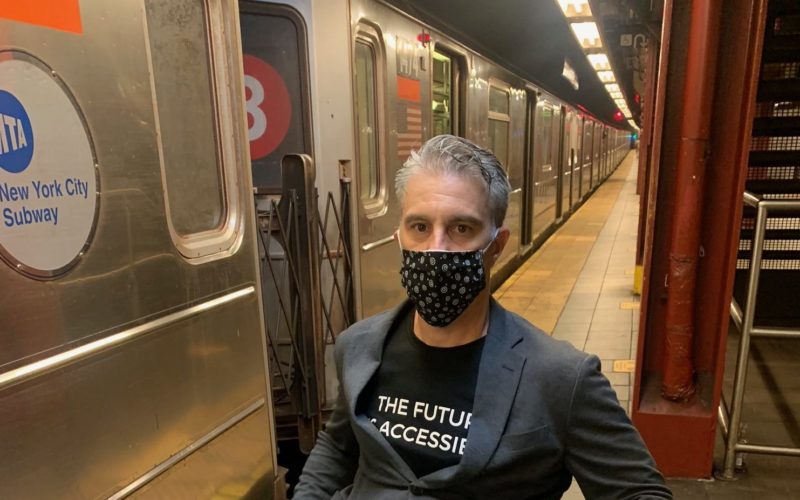 An Interview with Victor Calise, Disability Advocate and New MTA Board Member
An Interview with Victor Calise, Disability Advocate and New MTA Board Member
TransitCenter spoke with Commissioner Calise, a daily subway rider who uses a wheelchair, about his priorities for his tenure on the MTA Board.
Read More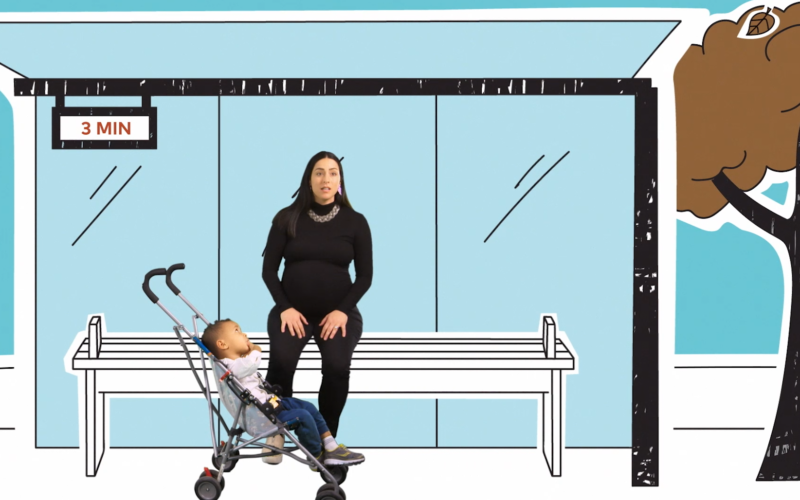 Making Transit Work for Parents and Caregivers: The Video!
Making Transit Work for Parents and Caregivers: The Video!
Our latest video shows how simple, affordable, and straightforward changes could make transit a safe and viable option for parents.
Read More